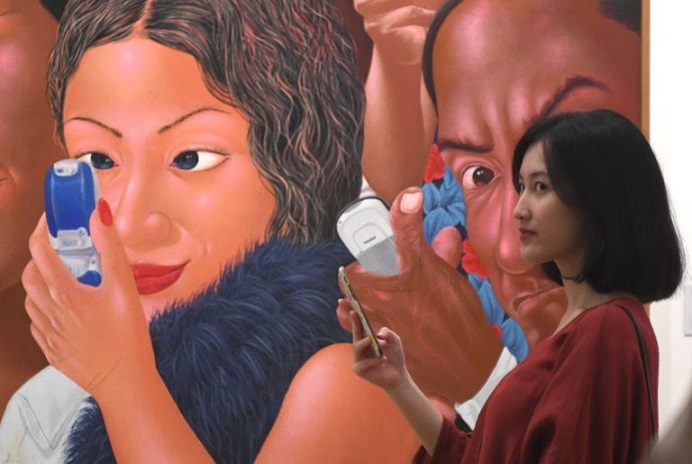“One of the things we are really looking at in the program is presenting Indonesia in the world, having conversations between Indonesia and elsewhere,” said Mr. Seeto, an Australian. “This is what museums all around the world would like to be able to do, but their collections don’t allow them to do it.”
Continue reading the main story
One early exhibition charts the history of Indonesian art, highlighting the works of Mr. Saleh, a 19th-century Indonesian Romantic painter who lived in Europe for two decades, to demonstrate how Indonesian artistic movements were influenced by international trends. While most of the works displayed at the museum will be from Mr. Adikoesoemo’s personal collection, he has invested in state-of-the-art maintenance facilities that, he said, will allow the museum to show works on loan from international museums around the world.
Creating Museum Macan has been a decade-long dream for Mr. Adikoesoemo, whose early attempt to collect art was washed away in the Asian financial crisis of 1997 and 1998, when his family lost nearly everything. He was forced to sell all of his most valuable pieces — including a Renoir and a beloved late Picasso — to keep creditors at bay. “I needed money, so I had to sell all of my Impressionists,” he said with a smile. “The crisis was very tough.”
Mr. Adikoesoemo was born into a middle-class family in East Java during the early 1960s, at the height of Indonesia’s political and economic turmoil in the transition to the rule of the dictator Suharto. By the time Mr. Adikoesoemo reached high school, though, the political situation had stabilized and his father, Soegiarto Adikoesoemo — who traded in chemicals to local textile and rubber factories — had established a thriving operation.
With an eye toward his future in the family business, Mr. Adikoesoemo was sent to the University of Bradford in Britain, where he earned a degree in business management. There wasn’t much discussion of art in the household, and in his youth Mr. Adikoesoemo wasn’t particularly interested in it. “I always wanted to be a businessman from when I was young,” he said.
Mr. Adikoesoemo had an awakening of sorts in the early 1990s, when he visited a friend’s villa on the Indonesian resort island of Bali. The friend “had so many artworks on the wall,” Mr. Adikoesoemo said. “His house becomes very colorful, very vibrant, very pleasant, so it makes me think, ‘Maybe I should start collecting art to put on my wall.’” Mr. Adikoesoemo began by buying Indonesian artwork, and then in 1996 began loading up on modernist paintings, including a Picasso.
Aaron Seeto, the director of Museum Macan, said that one of its goals is “presenting Indonesia in the world, having conversations between Indonesia and elsewhere.” CreditBay Ismoyo/Agence France-Presse — Getty Images
But the good times didn’t last long. The Asian financial crisis struck in 1997, sending the Indonesian rupiah’s value plummeting. Mr. Adikoesoemo had encouraged his father to take on debt to expand the business quickly, and the crisis exposed their businesses as deeply overleveraged.
His father had told him he was crazy to have invested so much money in Western paintings, but with Indonesian assets valued at next to nothing, the Picasso and Renoir were suddenly among the family’s most valuable possessions. Mr. Adikoesoemo sold the Western artworks as part of a debt-restructuring deal with 28 foreign banks. “At that time, my father was 63 years old, so he said: ‘It’s up to you. If you can solve it, you solve it, it’s yours; if you cannot solve it, there is nothing for you,’” Mr. Adikoesoemo remembered.
By the early 2000s, with the economy recovering, the younger Mr. Adikoesoemo managed to pay back the debts and restore the family business.
He never forgot that Picasso and Renoir had saved his fortune. “I realized art is an investment — when you need money you can still get value from it,” he said. But when he went back to buying art in the early 2000s, prices had skyrocketed, so he switched focus and bought mainly contemporary art.
In addition to being solid investments, contemporary pieces worked well in his minimalist house, with its high ceilings, huge windows and white walls. “Contemporary art, which is very colorful, suits the white well,” Mr. Adikoesoemo said.
But he acknowledged that founding a museum, and opening up his personal collection to the world, comes with far higher stakes than finding art that looks good in his house.
He even compared it to the anxiety of starting a new business. “The same,” he said. “The anxiousness, this generates a lot of excitement and adrenaline.”


